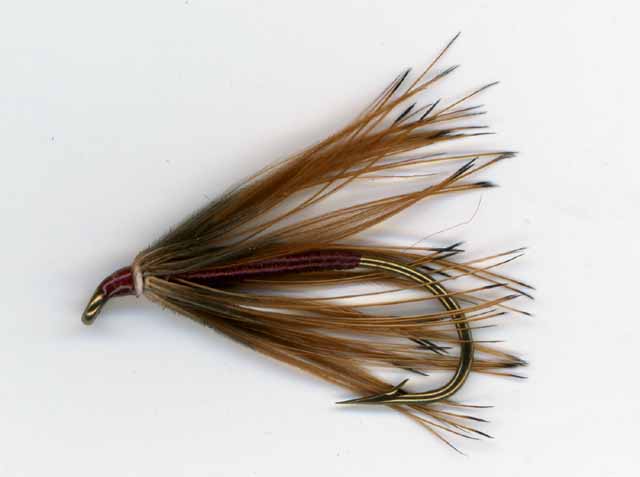Welcome to River Magic
Stillwater Slim on the Line ... June 23, 2009
|
 Rain & Apology
The big news this week is that the St. Mary’s River is in great shape from weekend rain and we expect some magnificent salmon, jumpers and sea-trout to ascend the river. I apologize to readers and staff of the Guysborough Journal for submitting the same column two weeks in a row, due to a mistake I made in naming my files. Yes, I was sloppy in not checking file content prior to pressing the “send” button. If I’m not fired, here’s a column about a great trout fly.
Carey Special
Hook: 1 - 3x long nymph or streamer hook, sizes 2-8. Thread: Black 6/0. Tail: Pheasant flank feather fibres (optional). Rib: Copper wire or similar (optional). Body: Peacock herl, dubbing or chenille (optionally weighted). Hackle:
Ringneck pheasant flank feather, tied back. I recall buying fishing gear back in the 1970s at Bruce’s Sport
shop in New Glasgow, Nova Scotia. One of the shop’s most popular trout flies was the Carey Fly, or Carey Special. Thus,
since Pictou County anglers often sought fishing destinations in neighbouring Guysborough or Antigonish Counties, the fly
became a staple for stillwater fishing throughout eastern mainland Nova Scotia.
Primarily thought of as a lake and pond fly, the Carey Special is at home in many kinds of water. Its adaptability allows it to suggest a wide range of fish foods. These include damselfly and dragonfly nymphs, cased caddis, small fishes and even crayfish. The pattern can be weighted or not and tied in a wide variety of materials.
While the Carey Special is indeed at home in a pond or lake, it is a very useful fly in rivers -especially the slower and deeper portions. In streams and rivers, fish it as any wet fly or strip it in as you would a small streamer. In ponds, a slow, hand twist retrieve on a sinking line can prove deadly!
Enjoy your fishing and please stay on the line … |